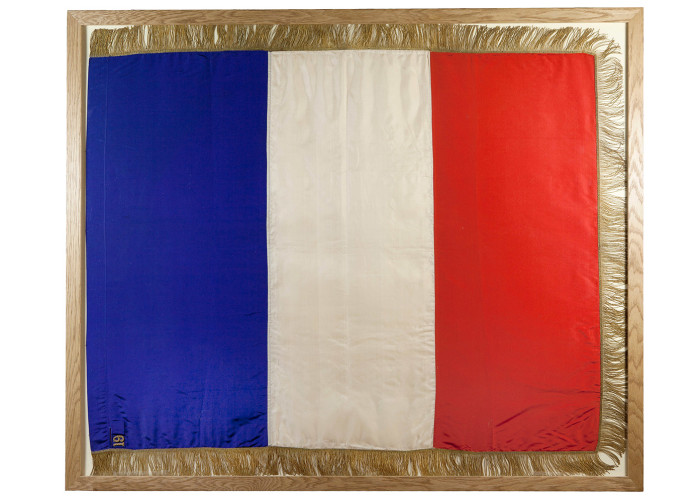Tricolore “Quit Rent” Flag
Every year the Duke of Wellington gives a copy of this silk “Quit Rent” flag to the Queen or King of Britain. It serves as a symbolical rent payment for the Duke’s ancestral home of Stratfield Saye.
Stratfield Saye is a splendid mansion in Hampshire. It was given to the first Duke of Wellington by the British government in 1817, in gratitude for his leading the Allied Army to victory at the Battle of Waterloo. To acknowledge the generous gift of a house and 600,000 acres of land, the Duke of Wellington makes a token “rent” payment of a flag every year.
In recent years, the Queen and the current Duke have met in June, in the Waterloo Chamber at Windsor Castle, for a ceremonial presentation. The flag, embroidered with the current year, is then hung in the Waterloo Chamber.
This practice is sometimes called “peppercorn rent”, meaning any trivial payment that is used to mark a gift of land. Theoretically, if the Duke of Wellington ever skipped a year’s “rent”, the property would be forfeited and the Duke and his family would have to move out. A spare copy of the flag is always kept at Stratfield Saye, just in case it is lost or damaged on the way to the presentation ceremony.
-
Curatorial info
- Originating Museum: Stratfield Saye
- Production Date: 1943
- Material: Silk with gold fringe, framed
- Size: Height 110cm, width 132cm
-
Use this image
You can download and use the high resolution image for use in a non-profit environment such as a school or college, but please take note of the license type and rights holder information below
- Rights Holder: Stratfield Saye Preservation Trust
- License Type: Creative Commons
Find it here
This object is in the collection of Stratfield Saye







